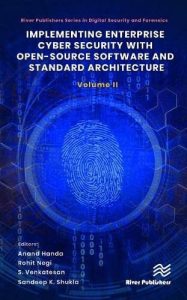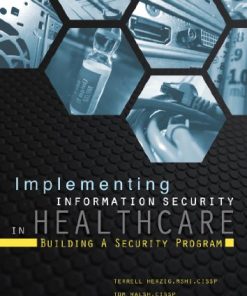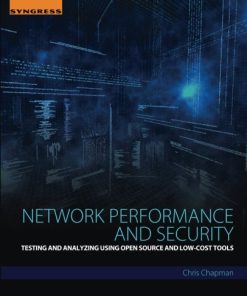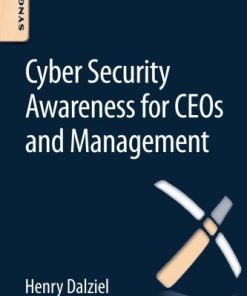Implementing Enterprise Cyber Security with Open-Source Software and Standard Architecture: Volume II (River Publishers Series in Digital Security and Forensics) 1st Edition Anand Handa
$50.00 Original price was: $50.00.$25.00Current price is: $25.00.
Implementing Enterprise Cyber Security with Open-Source Software and Standard Architecture: Volume II (River Publishers Series in Digital Security and Forensics) 1st Edition Anand Handa- Ebook Instant Download/Delivery ISBN(s): 9788770227957,9788770229623,9781000922387,8770227950,8770229627,1000922383, 9781000922394, 1000922391

Product details:
- ISBN 10:1000922391
- ISBN 13: 9781000922394
- Author:Anand Handa; Rohit Negi; S. Venkatesan; Sandeep K. Shukla
Cyber security is one of the most critical problems faced by enterprises, government organizations, education institutes, small and medium scale businesses, and medical institutions today. Creating a cyber security posture through proper cyber security architecture, deployment of cyber defense tools, and building a security operation center are critical for all such organizations given the preponderance of cyber threats. However, cyber defense tools are expensive, and many small and medium-scale business houses cannot procure these tools within their budgets. Even those business houses that manage to procure them cannot use them effectively because of the lack of human resources and the knowledge of the standard enterprise security architecture. In 2020, the C3i Center at the Indian Institute of Technology Kanpur developed a professional certification course where IT professionals from various organizations go through rigorous six-month long training in cyber defense. During their training, groups within the cohort collaborate on team projects to develop cybersecurity solutions for problems such as malware analysis, threat intelligence collection, endpoint detection and protection, network intrusion detection, developing security incidents, event management systems, etc. All these projects leverage open-source tools, and code from various sources, and hence can be also constructed by others if the recipe to construct such tools is known. It is therefore beneficial if we put these recipes out in the form of book chapters such that small and medium scale businesses can create these tools based on open-source components, easily following the content of the chapters. In 2021, we published the first volume of this series based on the projects done by cohort 1 of the course. This volume, second in the series has new recipes and tool development expertise based on the projects done by cohort 3 of this training program. This volume consists of nine chapters that describe experience and know-how of projects in malware analysis, web application security, intrusion detection system, and honeypot in sufficient detail so they can be recreated by anyone looking to develop home grown solutions to defend themselves from cyber-attacks.
Table contents:
PART ONE: Web Application Security
1. OWASP G0rking – Exploiting the Hidden Aspects of Google’s Search Capabilities
Vishal Soni and Neelakshi Sahni
2. OSS Known Vulnerability Scanner – Helping Software Developers Detect Third Party Dependency Vulnerabilities in Real Time
PART TWO: Malware Analysis
3. Detecting Malware using Machine Learning
Partha Majumdar, Shyava Tripathi, Balaji Annamalai, Senthil Jagadeesan, and Ranveer Khedar
4. New Age Attack Vectors – JPEG Images Machine Learning Based Solution for the Detection of Malicious JPEG Images
Shankar Kashamshetty and Kunal Chawla
5. Live Monitoring of Malware Attacks on Cloud using a Windows Agent-Based Solution 6. Malware Too Needs Attention
PART THREE: IDS
7. Implementation of Intrusion Detection System and Deception Technologies using Open-Source Tools for Small Business
Purushartha Srivastava and Kalpesh Seludkar
8. Attack Vector Analysis with New Benchmark
Ashish Ranjan Yadav and Rohit Negi
9. Stealpot Honeypot Network
People also search:
enterprise security vs cybersecurity
what is enterprise cybersecurity
how much does it cost to implement cyber security
various concepts of enterprise cybersecurity
implementing cyber security
You may also like…
Uncategorized
Implementing Information Security in Healthcare: Building a Security Program (Ebook PDF)
Computers
People-centric security : transforming your enterprise security culture 1st Edition Hayden
Computers - Networking
Computers - Security
Critical Security Studies in the Digital Age: Social Media and Security Joseph Downing
Computers & Technology
See Yourself in Cyber: Security Careers Beyond Hacking 1st Edition
Computers - Enterprise Computing Systems
Computers - Enterprise Computing Systems













